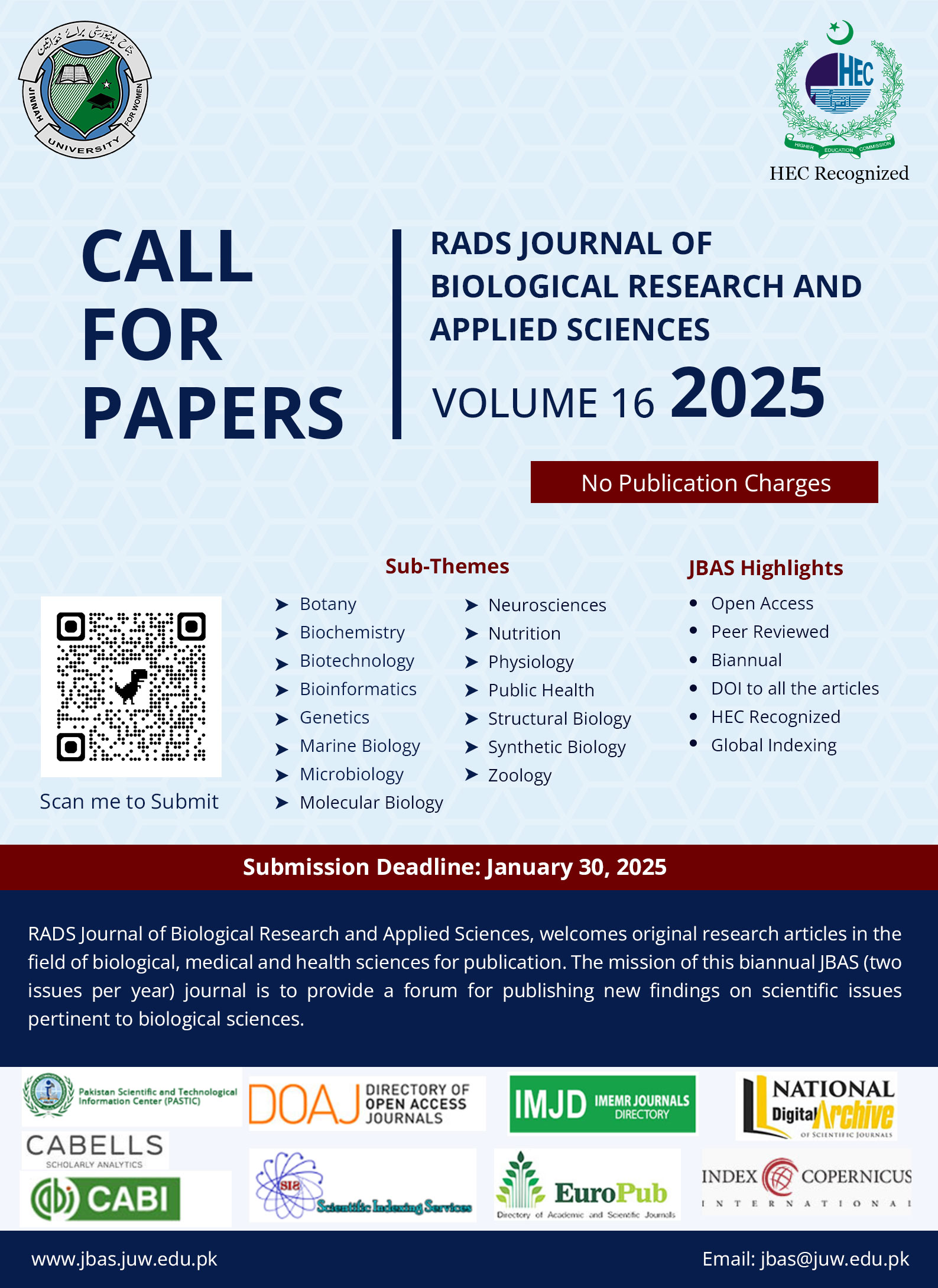Prevalence of Plasmodium spp. in Gulshan-e-Iqbal, Sindh, Pakistan
DOI:
https://doi.org/10.37962/jbas.v13i2.488Keywords:
Malaria, Plasmodium spp., Gulshan-e-Iqbal, Karachi, Pakistan.Abstract
Background: Malaria is caused by malaria parasite of Genus Plasmodium. It is transmitted by the bite of an infected Anopheles mosquito. Four species of Plasmodium namely P. malariae, P. falciparum, P. vivax and P. ovale are responsible for causing malaria in humans. The fifth one, P. knowlesiare is responsible to cause zoonotic infection in humans. Severe malaria may lead to death in humans.
Objectives: To study the prevalence of Plasmodium spp. and to evaluate the percentage of infection in males, females and children of Gulshan-e-Iqbal, Karachi, Sindh, Pakistan.
Methodology: Samples were collected from different laboratories and hospitals of Gulshan-e-Iqbal, Karachi, Sindh, Pakistan. Chi-square test for frequency data was performed.
Results: A total of 411 cases were found to be positive out of 2096 suspected cases. P. vivaxwas more prevalent than P. falciparum. Out of 411 patients, 296 cases were of P. vivax, 112 were of P. falciparum, 2 were of P. malariaewhile one was of P. ovale. The frequency of different species was found to be highly significant (p<0.001). In age class <1-15 yrs, 16-40 yrs and 41->80 yrs the frequency differed significantly as indicated by chi-square test (p<0.001). Our results show that infection of malaria is more frequent in males as compared to females.
Conclusion: Present survey shall be beneficial for the control of Plasmodium infection. Screening of patients who have malaria is important in other areas of Karachi as well. Additional studies with large sample sizes in other localities are required to fully understand malaria pathology in detail. The presence of P. ovaleand P. malariaecould be due to travel of subjects to African countries or Srilanka.
Downloads
Published
Issue
Section
License
Copyright (c) 2023 RADS Journal of Biological Research & Applied Sciences

This work is licensed under a Creative Commons Attribution-NonCommercial 4.0 International License.

This is an Open Access article distributed under the terms of the Creative Commons Attribution License (http://creativecommons.org/licenses/by/4.0), which permits unrestricted use, distribution, and reproduction in any medium, provided the original work is properly cited.

















